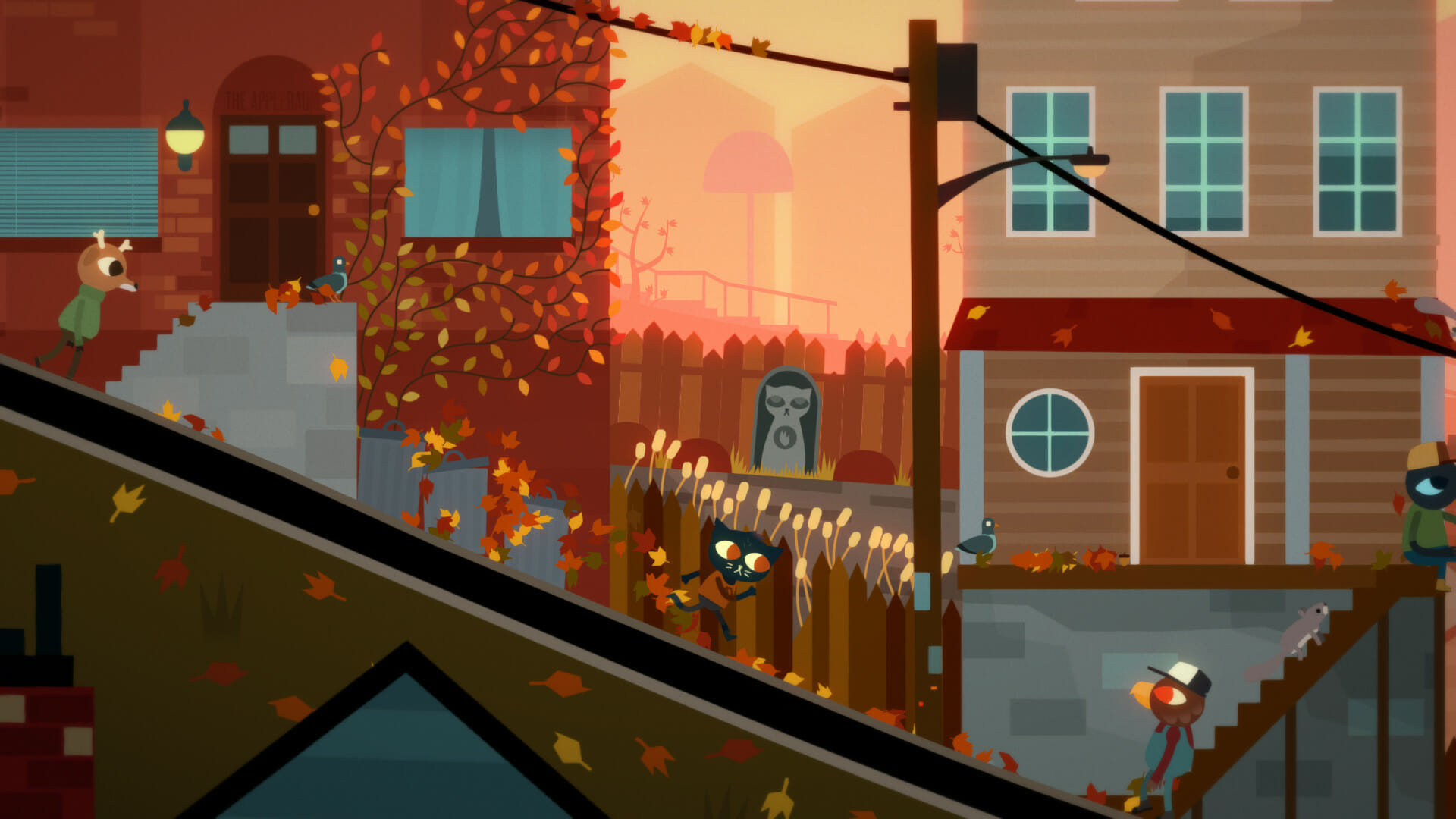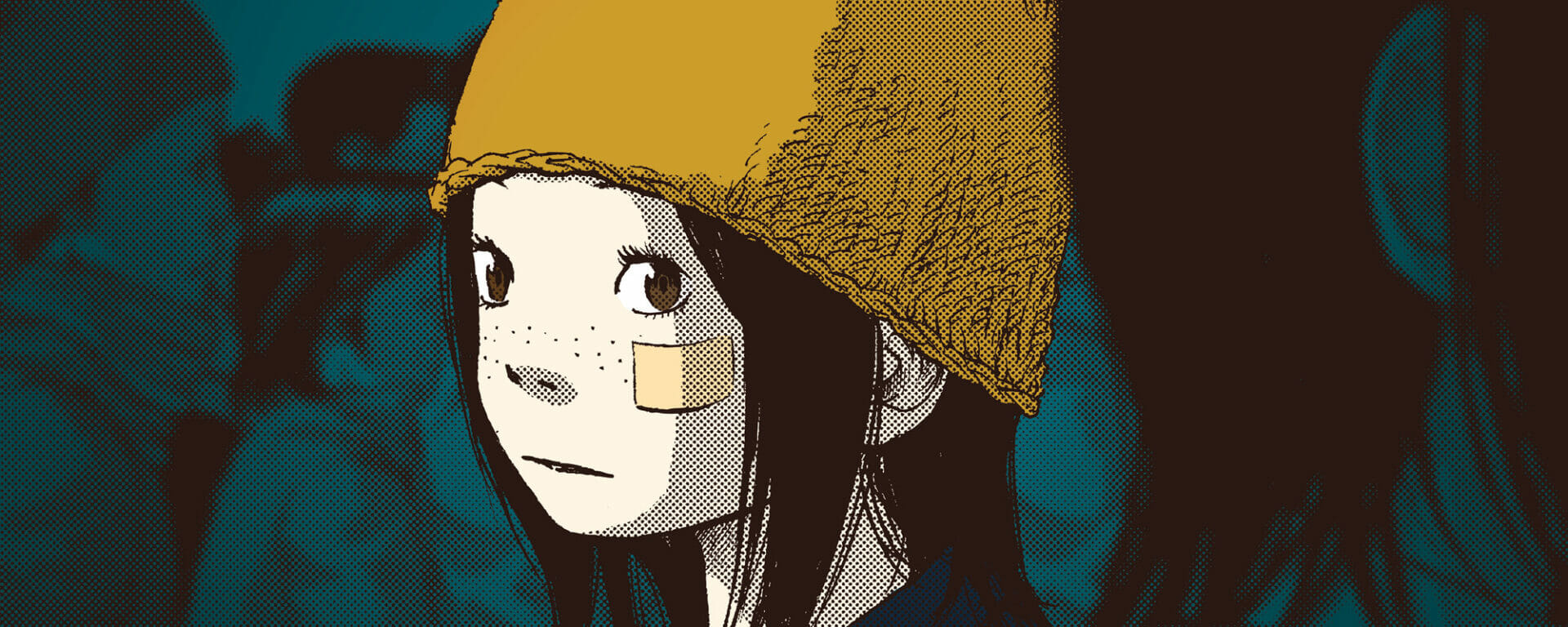
Night In The Woods | Embracing the inevitability of future
Art Director
Lead Composer
Publishing Year
Type of game
Genre
Subgenre
Country
Mae Borowski left college to return to her hometown, Possum Springs. Her parents forgot to pick her up, so she has to walk home through the woods. This is how Night In The Woods starts: a cat with an oversized shirt, waiting at a bus stop. But the first step involves something peculiar: the player will have to move to the left. A direction that, in video games, usually represents the past. That is because going back to Pelican Town is a regression, for Mae. A return to a simpler life, or at least that is what she thought.
What are adults, anyway?
The main cast of Night In The Woods is composed of four young adults: Mae (Margaret) Borowski, Beatrice Santello, Greggory Lee, and Angus Delaney. As she returns home, Mae is enthusiastic to reconnect with them and return to her old life, before she left for college. However, she finds out that her friends have moved on. They have jobs and responsibilities, and some are even planning to leave Possum Springs. This leaves Mae feeling left behind, as her friends consider her immature.
The town’s mysteries with disappearing kids and eldritch deities give a dark, Twin Peaks -like twist to the story. However, Night In The Woods is more than a mystery story. It is most of all an introspection into the characters’ lives and thoughts. Mae struggles to grow up and is too self-absorbed to recognize the different struggles of her friends, much like Holden Caufield in The Catcher in the Rye. For example, she does not understand why Bea cannot just leave the job that is holding her back; while Bea resents Mae for leaving college, her unreachable dream.
These themes, along with Night in the Woods‘ particular setting and animation, allowed for the project to be fully funded on Kickstarter and created by a handful of people.

The insignificance of the player’s choices
Night In The Woods has a simple gameplay: most of the game is just running around through Possum Springs. The town is finely designed to offer a sense of reality: a tribute to growing up in small, poor towns that the developers wanted to gift to their hometown in Pennsylvania. The game Lake, which came out in 2021, offers a similar perspective.
In Night In The Woods there are quick-time events such as stealing or knife fighting and during the band rehearsals, the game features brief Guitar Hero-like moments. Also, there is a small rogue-like game that Mae can play on her laptop. However, most time in Night In The Woods is spent making choices.
Games based on choices were made famous by the Life is Strange series. There is one fundamental difference between the two games, though. In this one, the player’s choices do not really matter.
Mae has a really strong and complicated personality. At one point she had beaten up a fellow teenager with a baseball bat, earning her the nickname of “killer” among the town. Many times, her replies to her friends or family are mean, petty, or annoyingly daft, and the player has no choice but to support that conversation by selecting one of the – basically identical – responses. One example is the ironic non-choice between “You always have a choice” and “You can always choose.” This mechanic can make the player feel annoyed and powerless. However, in a game about insignificance, the inability to make real choices has its significance. Just like Mae and everyone in town, the player cannot change the situation: they can just witness as it unrolls before their eyes.

At the end of everything, hold on to anything
The cause of Mae’s dropout from college turns out to be a severe dissociation she was suffering from. She tells her friend that this is the cause of her “anger issues”, and her generally feeling of hopelessness. She is unable to give meaning to what surrounds her, only seeing it all as shapes.
In a way, Mae is not wrong: she is a video game character, and the world that surrounds her is not real. However, to a person who lives in that world, this realization is crushing. And she is not the only one suffering from this. The council of Possum Springs, which refuse shelter to a homeless man to avoid discouraging nonexistent tourism, sees people as shapes in the wheel of the economy. The bosses that cause the death of many mine workers because of negligence only saw them as shapes.
The constant change of the state of things scares Mae and gives her an existential dread she feels she has no escape from. Just as Possum Springs keeps decaying because it is stuck in the past, Mae cannot move forward like her friends did, because she feels like there is nothing waiting for her. But in the end, she will learn to give meaning to anything, as small as it is, just to hold on to reality. As David Foster Wallace wrote in Infinite Jest: “Everything I’ve ever let go has claw marks on it.” At the end of the game, Mae will not feel like a cartoonish big-eyed (“nightmare-eyed”, she would say) cat anymore, but a real person, both to the player and to herself.
Tag
Buy a ☕ for Hypercritic









